8 Wildflowers Native to Connecticut (Identification Guide With Pictures)
-
Pete Ortiz
- Last updated:
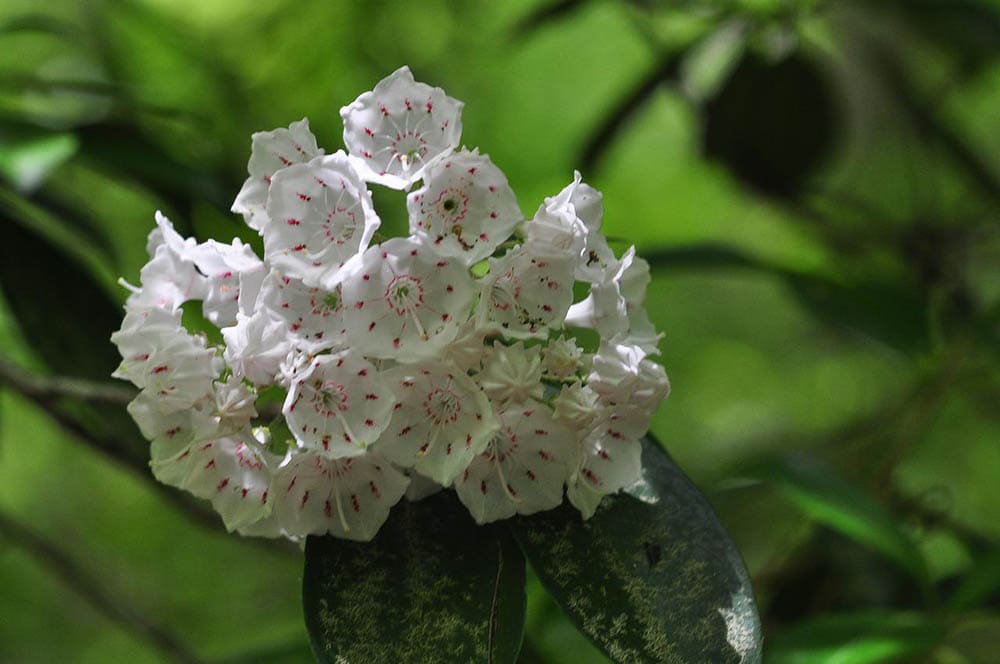
Connecticut has diverse ecosystems ranging from deciduous landscapes to wetlands. It’s no surprise that the scenery diversity allows the growth of a broad array of wildflowers. The bloom seasons bring out nature’s picturesque botanical arrangements, filling fields with native and non-native wildflowers.
While there are hundreds of wildflower species in Connecticut, we will stick to eight common species that occur naturally in the state. Because these wildflower species have adapted well to the soil and climatic conditions, they thrive with little or no maintenance.
The 8 Wildflowers Native to Connecticut
1. Witch Hazel
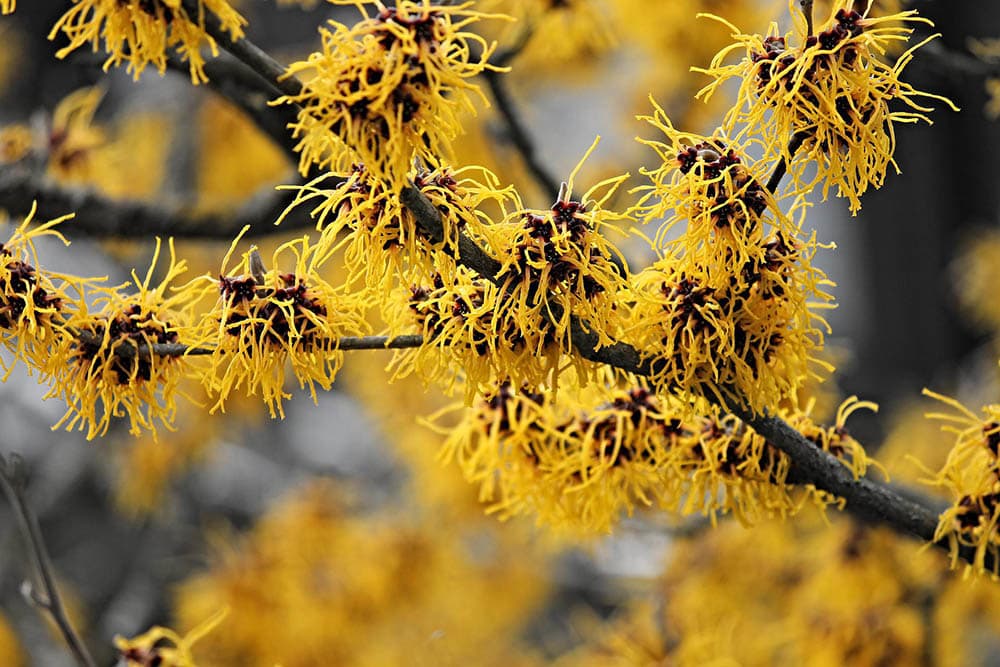
| Scientific Name: | Hamamelis virginiana |
| Flower Color: | Yellow |
| Hardiness Zone: | 4 to 8 |
| Bloom Time: | Autumn through early winter |
The witch hazel is one of the most common wildflowers in Connecticut. This autumn shrub is relatively maintenance-free and rarely needs fertilizer or pesticides to thrive. Native folk recognized witch hazel for its medicinal properties. Extract from the wood and bark was used to treat various skin conditions, from eczema to acne. Today it is used to treat skin irritations and abrasions.
Looks-wise, this wildflower has an irregular, open crown with large, crooked branches. It features long lettuce-green leaves with a wavy margin and a unique floral display of yellow blooms with strap-like, creased petals. Mature witch hazels measure roughly three to four and a half meters in height. However, they can also reach tree size under optimal conditions.
Witch hazel has intensely fragrant flowers that occur at the oddest time of the year. They bloom in autumn when butterflies have migrated, and honeybees are busy hibernating for winter. Unlike most wildflowers, witch hazels depend on shivering moths for pollination.
Habitat
Witch hazel thrives in dry, moist wooded areas. You can find them growing along stream banks in areas with acidic soil and either full or partial shade. If you want to grow the wildflower in your yard, choose a site with well-drained soil with a pH of at least 6.8.
2. Eastern Purple Coneflower
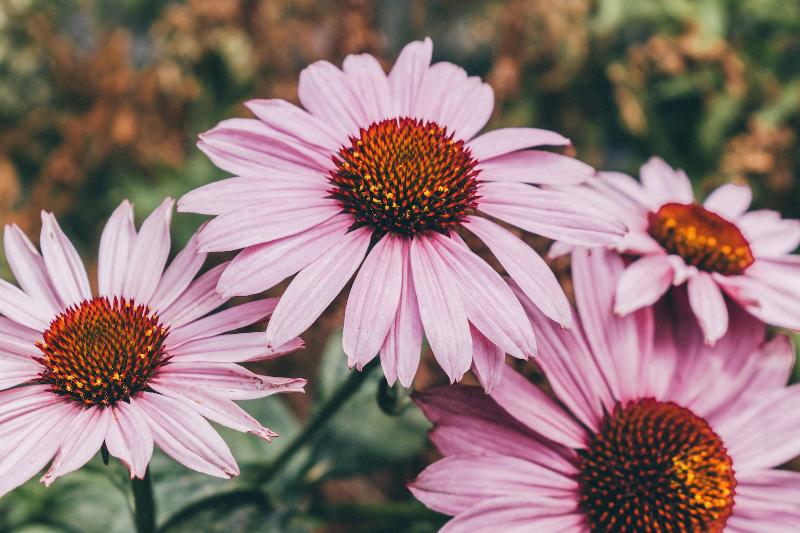
| Scientific Name: | Echinacea purpurea |
| Flower Color: | Pink-Purple |
| Hardiness Zone: | 3 to 8 |
| Bloom Time: | Summer |
The eastern purple coneflower is native to some parts of North America, including Connecticut. The perennial wildflower can grow between two and five feet tall and typically has no branches. Instead, several stems emerge from the ground and have rough, scattered leaves with pointed tips and hairs on both sides.
In summer, eastern purple coneflowers produce an individual flowerhead atop the stems. These ornamental pink-purple blooms have a brisk central disk that can be up to four inches wide. The slightly drooping ray florets give the plant generally interesting aesthetics. You can use them to make herbal tea, which is believed to strengthen the immune system.
Habitat
The eastern purple coneflower grows naturally in Connecticut’s open woods, meadows, and moist prairies. It is a showy, generally maintenance-free plant that can also thrive in gardens with neutral to acidic soil. The wildflower prefers moist, well-drained soil and spots receiving full sun and partial shade.
If you love to watch pollinators like bees, birds, and butterflies, adding eastern purple cornflowers to your yards is an excellent idea. While bees are attracted to the wildflower for its nectar, birds like goldfinches love eastern purple cornflowers for their seeds.
3. Blue-Stemmed Goldenrod
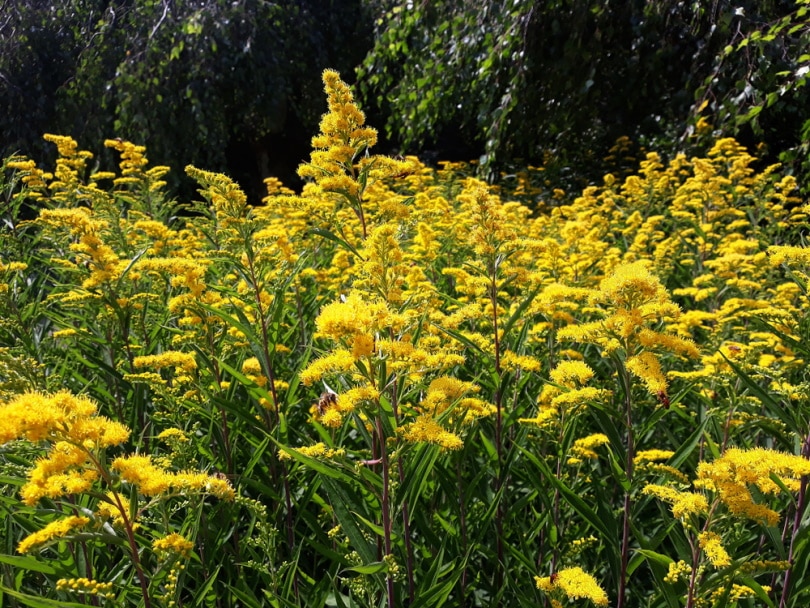
| Scientific Name: | Solidago caesia |
| Flower Color: | Bright yellow |
| Hardiness Zone: | 4 to 8 |
| Bloom Time: | Late summer/early fall |
The blue-stemmed goldenrod is an herbaceous perennial wildflower native to the rich woodlands in the Eastern half of the U.S. Mature plants are between one and a half and three feet tall and feature a central greenish-purple stem that typically leans to one side. While the leaves are light green when young, they turn blue-gray with age. Also, leaves become smaller towards the peak of the stem.
Between late summer and early fall, blue-stemmed goldenrods develop clusters of between one and twelve flowerheads. Often, clusters at the end of the stem are the largest. These tiny, daisy-like blooms with an appealing bright yellow hue serve as magnets for short-tongued bees and some species of moths.
Habitat
Blue-stemmed goldenrods thrive in woodlands and rocky cliffs that receive full or partial shade. While they can also tolerate full sun, they grow optimally in areas with light shade and well-drained soil.
Introducing blue-stemmed goldenrods can give your garden a pop of color each summer. While the wildflower is clump-forming, it doesn’t spread aggressively and can be paired with other plants that produce purple or red blooms.
4. Mountain Laurel

| Scientific Name: | Kalmia latifolia |
| Flower Color: | White and pink |
| Hardiness Zone: | 5 to 9 |
| Bloom Time: | Spring |
Mountain laurel goes by many names, including lambkill, calico bush, spoonwood, ivy bush, and sheep laurel. It is Connecticut’s official state flower, designated in 1907. It is one of the most ornamental wildflowers native to America, loved for its evergreen foliage and fragrant white and pink blossoms. It’s no surprise that this wildflower is also the state symbol of Pennsylvania.
The mountain laurel gives a spectacular display of flowers in spring. The plant forms beautiful clusters of bell-like, fused-petal blooms. Irrespective of whether the blossoms are white or pink, they have symmetrically arranged maroon to purple streaks.
Because of the bell shape, the mountain laurel flowers use an unusual means of ensuring pollination. The stamens are arched like bows and fling like a catapult under the weight of a pollinator. This showers pollen on the bee, ensuring its effective distribution.
Habitat
Mountain laurel occurs naturally in wooded areas, riparian lands, and near swampy zones. The shrub loves moist, well-drained, humusy, acidic soil. It thrives best in areas receiving moderate to partial shade. While too much sun scorches the leaves, deep shade prevents the wildflower from blooming to its full potential.
Adding the mountain laurel to your yard assures you of a jaw-dropping floral show each spring. The wildflower makes an excellent choice for backdrops, boarders, wood gardens, and living hedges. Even after the blooming season, the evergreen shrub will give your space a welcome splash of color, especially during the winter.
5. Pearly Everlasting
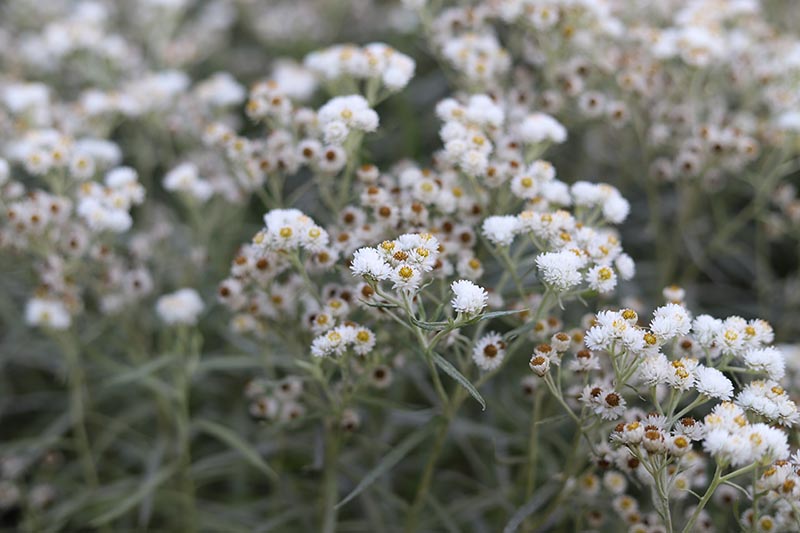
| Scientific Name: | Anaphalis margaritacea |
| Flower Color: | White with yellow center disc |
| Hardiness Zone: | 3 to 7 |
| Bloom Time: | Late spring into early summer |
Pearly everlasting, also known as the western pearly everlasting, is an herbaceous perennial wildflower with long stems of up to three feet. It is native to America and a member of the sunflower family. Native folk used the pearly everlasting to treat headaches, diarrhea, and dysentery.
But what makes the wildflower outstanding is its drought tolerance and preference for dry soil and full sun.
The stems of the pearly everlasting are dense with a light layer of wooly white hairs. The leaves are narrow with a grayish hue because of their white, wooly underside. Between late spring and early summer, this wildflower produces tiny, white, button-like blooms with yellow center discs.
Habitat
In the wild, pearly everlasting wildflowers grow in dry fields, roadsides, and along the edges of wooded areas. They also thrive in home gardens and are a top choice for folks who want to attract different butterfly species.
This wildflower species can take any landscape design to the next level. Its silver-gray leaves create an interesting contrast against other bright-hued garden plants. The best part is that it grows well in dry, sunny spots where other plants may not thrive.
6. Eastern Red Columbine
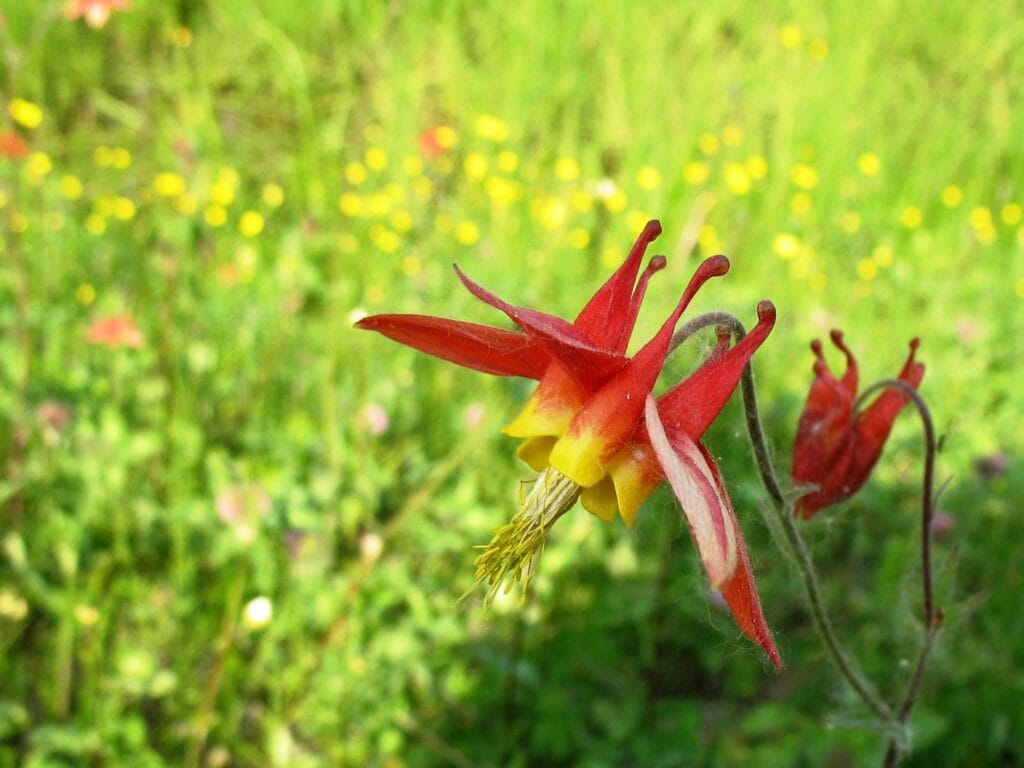
| Scientific Name: | Aquilegia canadensis |
| Flower Color: | Red and yellow |
| Hardiness Zone: | 3 to 8 |
| Bloom Time: | Spring |
Eastern red columbine, also known as wild columbine, is a branching perennial native to Connecticut and other parts of North America. Mature wild columbines can measure up to three feet tall and have distinct blue-green, three-lobed leaves. They produce nodding red and yellow blooms with sepals and stamens that hang below the lantern-shaped petals.
Columbine blooms attract long-tongued insects and hummingbirds that have to do some serious gymnastics to reach the nectar. Feathered beauties interested in the sweet nectar have to hover underneath the two-inch blooms and fly upside down.
To attract more hummingbirds to your home, you must deadhead the wildflower to prolong the next blooming season.
Habitat
Eastern red columbine occurs naturally on rocky slopes and in open woodlands and clearings. The wildflowers thrive in rich, moist, well-draining soil and prefer spots with full sun or moderate shade. Even though they can also tolerate dry soil, the foliage and blooms look better with consistent moisture.
7. Royal Fern
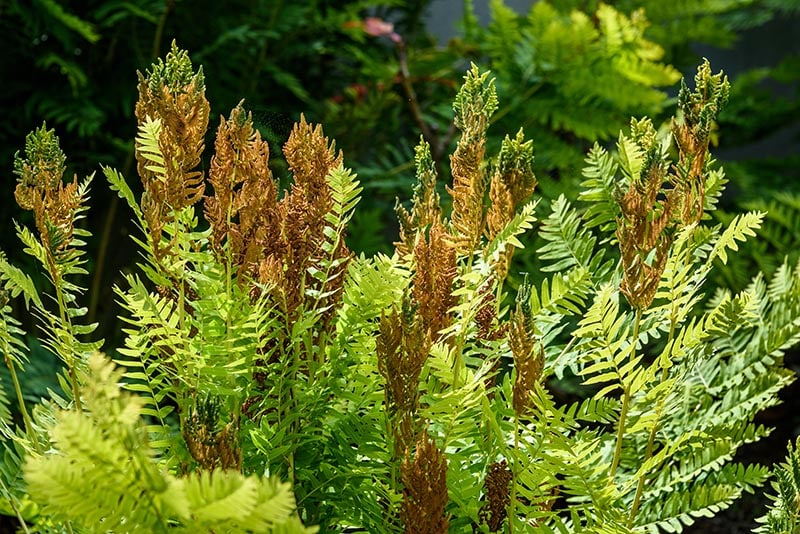
| Scientific Name: | Osmunda regalis |
| Flower Color: | Rusty brown |
| Hardiness Zone: | 3 to 10 |
| Bloom Time: | Spring |
The royal fern, also called the flowering fern, can add color and an interesting texture to any garden. While the fern doesn’t produce the typical blooms, it develops fertile flower spikes with a distinct rusty brown hue every spring.
However, this tall and robust fern is more popular for its bright green fronds. In fall, these fronds turn red-brown to give your garden a striking air of elegance.
Under the right growing conditions, royal ferns grow in clumps and can be up to six feet tall. The fronds become large and broad with well-separated leaflets. It is believed that the root of the plant is a powerful astringent and helpful in treating jaundice, rheumatic joints, and wounds.
Habitat
Royal ferns grow naturally in ledges, riparian forests, along streams, and on moist buffs. In-home gardens, they thrive on wet sites and shaded areas where planting other wildflowers can be impractical.
Once established, royal ferns are generally low maintenance and remain disease and pest-free. You can plant them in water gardens, shady borders, and along ponds. Ensure the soil is humus-rich, fertile, consistently moist, and well-drained.
8. Narrow-Leaf Mountain Mint
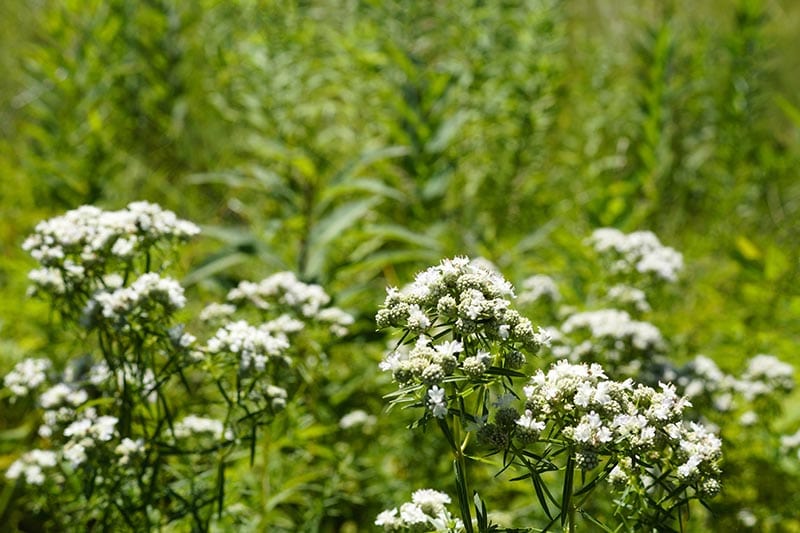
| Scientific Name: | Pycnanthemum tenuifolium |
| Flower Color: | White with purple spots |
| Hardiness Zone: | 4 to 8 |
| Bloom Time: | Early summer through early fall |
Narrow-leaf mountain mint is an aromatic perennial wildflower prized for its long blooming season. It forms clumps that make it stiff and erect and bears numerous branches. The plant’s narrow, needle-like leaves have an appealing silvery hue giving it interesting aesthetics.
Under the right growing conditions, narrow-leaf mountain mints can grow up to three feet tall. Between early summer and early fall, they produce clusters of tiny, two-lipped blooms that appear atop the stems. While the flowers are generally white, they have a few purple spots. The narrow-leaf mountain mints start blooming after they are at least one foot wide.
Habitat
The narrow-leaf mountain mint is a Connecticut native that grows almost throughout the state. It occurs naturally in dry meadows, upland prairies, open woods, and along roadsides. The plant is such an infatuating magnet for pollinators that they may not notice your presence even if you reach out to pat their backs.
Mountain mints are not picky about the soil. They can tolerate dry, shallow-rocky, and even clay soil. The plant loves full sun to part shade and does not require much maintenance once established. Because it can spread rapidly, consider confining it with hardscape elements.
Final Thoughts
Are you looking to create a backyard sanctuary of local wildflowers that attract butterflies, bees, and birds? We have listed eight wildflowers native to Connecticut. Now you can choose the best options for your garden like a top-tier nature nerd and watch them thrive with minimal effort.
Next time you explore open spaces of gorgeous blooms at the peak of their abundance, we hope you can speak like a true wildflower geek. Please don’t shy away from calling local wildflowers by their names and perhaps even sharing some fun facts about these colorful beauties!
Featured Image Credit: zrefugee, Pixabay
Contents


